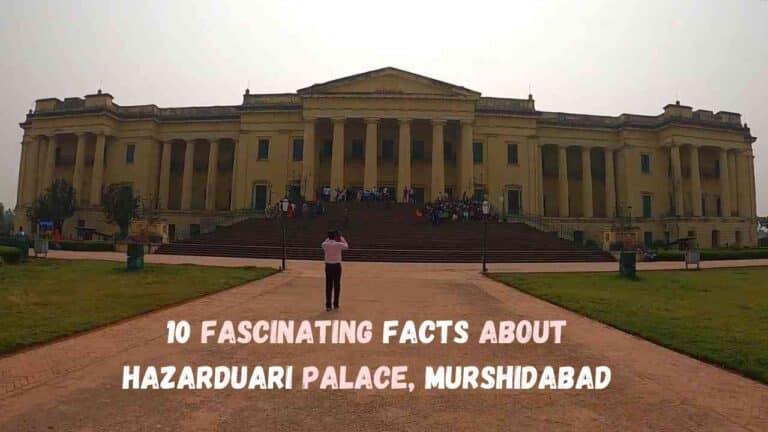Hazarduari Palace is a big historical place in Murshidabad, West Bengal. Its name means “palace with thousand doors” in English. The palace is special because it has many doors and a unique design that makes it look different from other old buildings.
This palace was built a long time ago in 1837. The ruler of Bengal at that time, Nawab Nazim Humayun Jah, got it made. The palace was very important for Bengal’s history because many important things happened there during old times.
In this article, we will tell you 10 interesting things about Hazarduari Palace. These facts will make you want to know more about this special place. You will learn about the palace’s doors, rooms, and other cool things inside Murshidabad Hazarduari.
Heritage Sites
Murshidabad is a nice place for people who like old buildings and history in West Bengal. The city has many old things from long ago. Some things are even from before people wrote down history.
Many important people ruled Murshidabad. Emperor Bimbisara was one of the first rulers. The last rulers were called Nawabs. When the British came, they made Calcutta more important than Murshidabad.
There are other old places to see in Murshidabad too. You can visit Kathgola Palace, Adinath Jain Temple, and some old forts. There are also big buildings called Imambaras that you can look at.
Also Read: Top 5 Famous Places in Darjeeling
10 Interesting Facts
The Palace of a Thousand Doors
The palace is called Hazarduari because “hazar” means thousand and “duar” means door. But it doesn’t really have 1000 doors. It has 900 real doors and 100 fake ones. The fake doors were made to confuse bad people who might attack.
Architectural Marvel
The palace looks like buildings in Europe. It has a big staircase and tall pillars. The stairs have 37 steps made of stone. The pillars are very big and make the palace look grand.
The Nizamat Imambara
There used to be a wooden Imambara here. But it burned down in 1846. They built a new one by 1848. This Imambara is the biggest one in all of India. It’s a very important building.
The Madina Mosque
The Madina Mosque is special because they used soil from Mecca to build it. Nawab Siraj ud-Daulah made this mosque. He wanted poor Muslims to feel like they went to Mecca when they came here.
The Bacchawali Tope
There’s a big cannon in the palace garden. It’s called Bacchawali Tope. They only fired it once because it was so loud that it made pregnant women have babies early. The sound could be heard 10 miles away.
The Crystal Chandelier
The palace has a very big crystal chandelier. It’s the second biggest in the world. Only the one in Buckingham Palace is bigger. Queen Victoria gave this chandelier to the Nawab. It used to have 1001 candles, but now it has 96 light bulbs.
The Mystery Mirror
There are two special mirrors in the palace. When you stand in front of them, you can’t see yourself. But other people can see you. The Nawab used these mirrors to catch bad people who might try to hurt him.
The Museum Collection
The palace has a museum with many old things. You can see a knife that killed a famous person, an old chair for carrying people, and the Nawab’s special smoking pipe. There are also many paintings and books from long ago.
The Clock Tower
The palace has a big clock tower. People call it Ghari Ghor. It has clocks on all four sides. The clocks helped boats on the Bhagirath River know what time it was. Some people call it the Big Ben of Murshidabad Hazarduari.
Political Significance
The palace was used for important meetings long ago. The Nawabs used it, and later the British used it too. Some British officials even lived in the palace. It was a very important place for making decisions.
